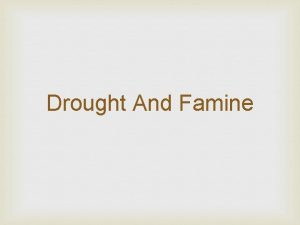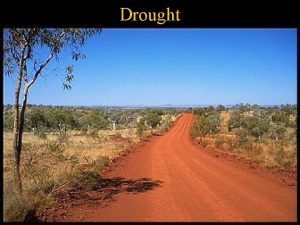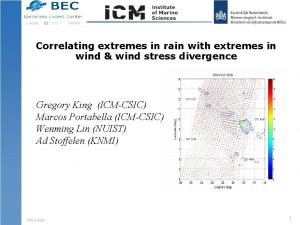ClimateRelated Precipitation Extremes Focus on precipitation extremes drought





- Slides: 5

Climate-Related Precipitation Extremes • Focus on precipitation extremes (drought, intense precipitation events, hail, freezing precipitation, snow…) to provide new insights into their occurrence • Work closely with a wide range of users in multiple sectors • Develop, use and interpret observed and simulated data for the analysis of extremes Principal Investigators: Ronald Stewart (U of Manitoba) - Ronald. Stewart@umanitoba. ca Francis Zwiers (UVIC) - fwzwiers@uvic. ca Website: https: //gwf. usask. ca/extremes/index. php Project coordinates: PI, Precipitation email, website, etc Climate-Related Extremes

Transformational Science Highlights ● 08/2020? 07/2019 New 4 km CONUS II runs: Launched in July, continental scale, 20 -year simulations of the ~40% done present and future climate using a carefully updated version of the convection permitting 11/2019 WRF model ● CONUS II domain Hazardous freezing precipitation: Identification and analysis of events affecting electrical utilities; Factors leading to extended power outages, including local topographic effects, are being understood using the WRF CONUS I (PGW) runs Project name Title Climate-Related Precipitation Extremes Hours of wet snow on May 11, 2004

Transformational Science Highlights Hail: Changes in hail occurrence are being studied using the Hailcast model driven by WRF CONUS I runs ● Projected change in frequency of hail ≥ 4 cm Performance improvement at locations where GEV distribution does not fit well Return levels for very long periods: Becoming critical for engineering design; standard methods based in extreme value theory are not adequate; Developing a more physically based approach with promising results based on testing with the Can. RCM 4 large ensemble Compound model (50 years of data) GEV (1750 years of data) Fraction of points ● Relative RMSE (%) Project name Title Climate-Related Precipitation Extremes

Project Impact and Aspirations Overall Goal: Demonstrate research and applications addressing important issues for several sectors and facilitate effective utilization of knowledge by our users, GWF colleagues, broader community • Electrical Utilities: Improve the resilience of electrical supply systems by providing information needed to better understand precipitation related impacts on transmission and distribution systems • Insurance: Contribute to continued viability of insurance based risk sharing mechanisms by better quantifying risk from extreme precipitation events and long term changes in risk profiles • Engineering: Enable future climate resilient infrastructure design by increasing confidence in estimates of current and future extreme climatic loads and provide building code guidance • Agriculture: Better manage impact of future precipitation extremes, prolonged drought periods, hail, etc. , on crop yields Climate-Related Precipitation Extremes

Challenges and Cross-project Collaboration Opportunities Key Challenge ● CONUS II data management and user support Opportunities ● Active connections with MWF and Pillar I projects ”Short-duration extreme precipitation” and “Mountain Water Futures” ● CONUS II simulations will provide many more opportunities (driving hydrologic models, extremes assessment, evaluation of extremes producing processes, etc). ● But, capacity within our project for additional collaboration is extremely limited Climate-Related Precipitation Extremes









